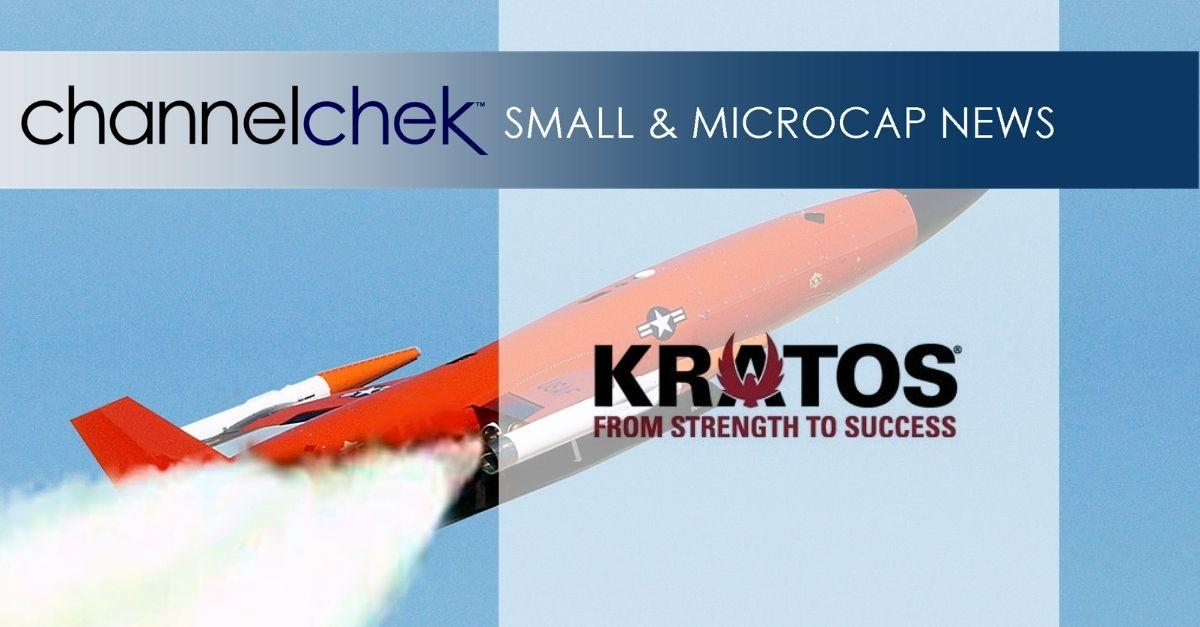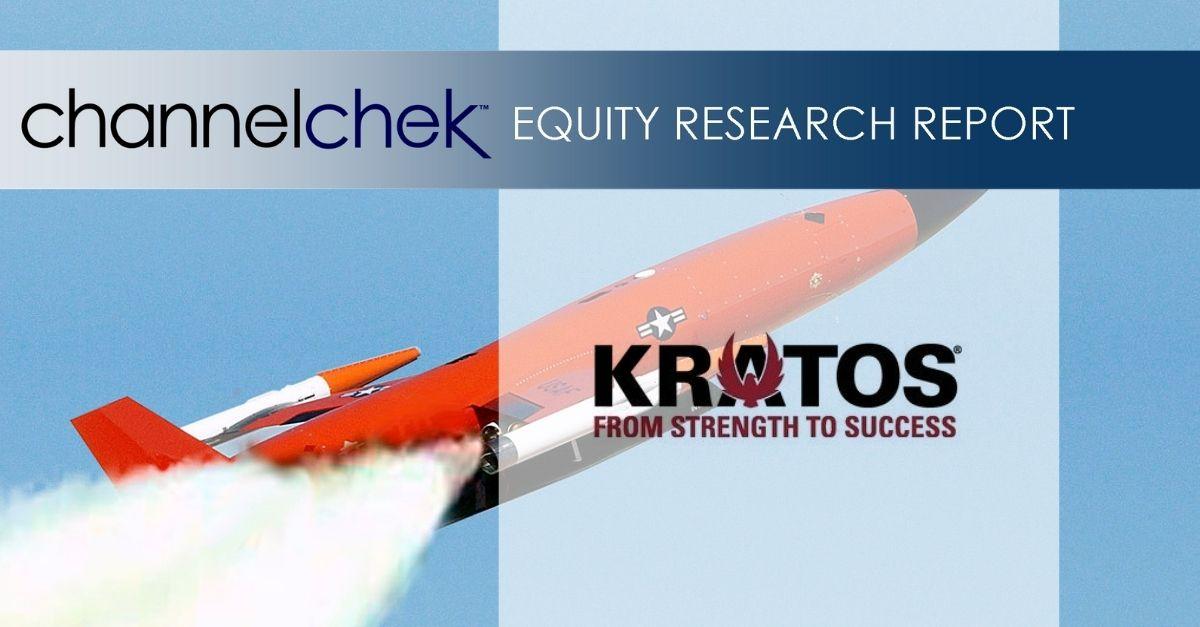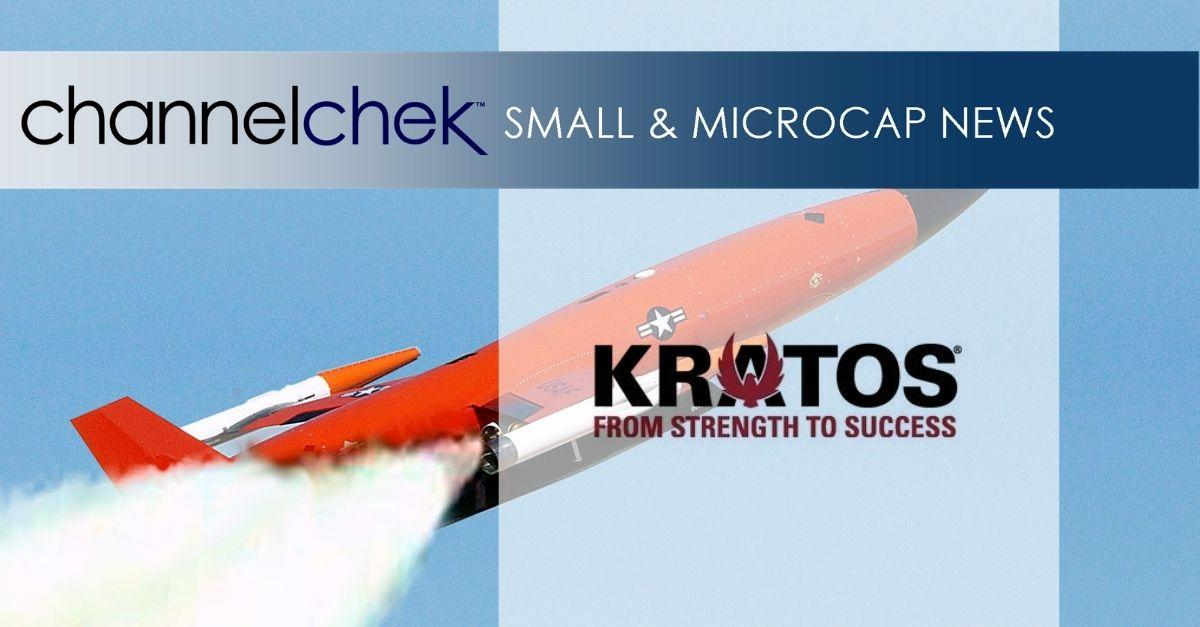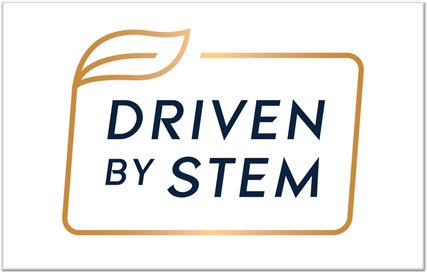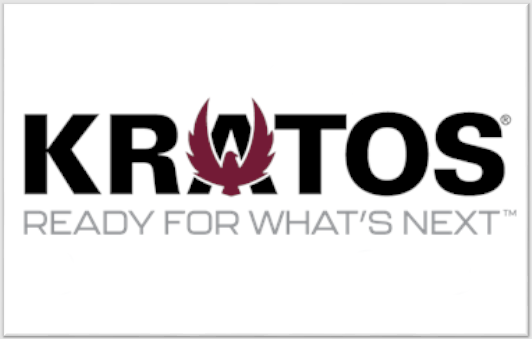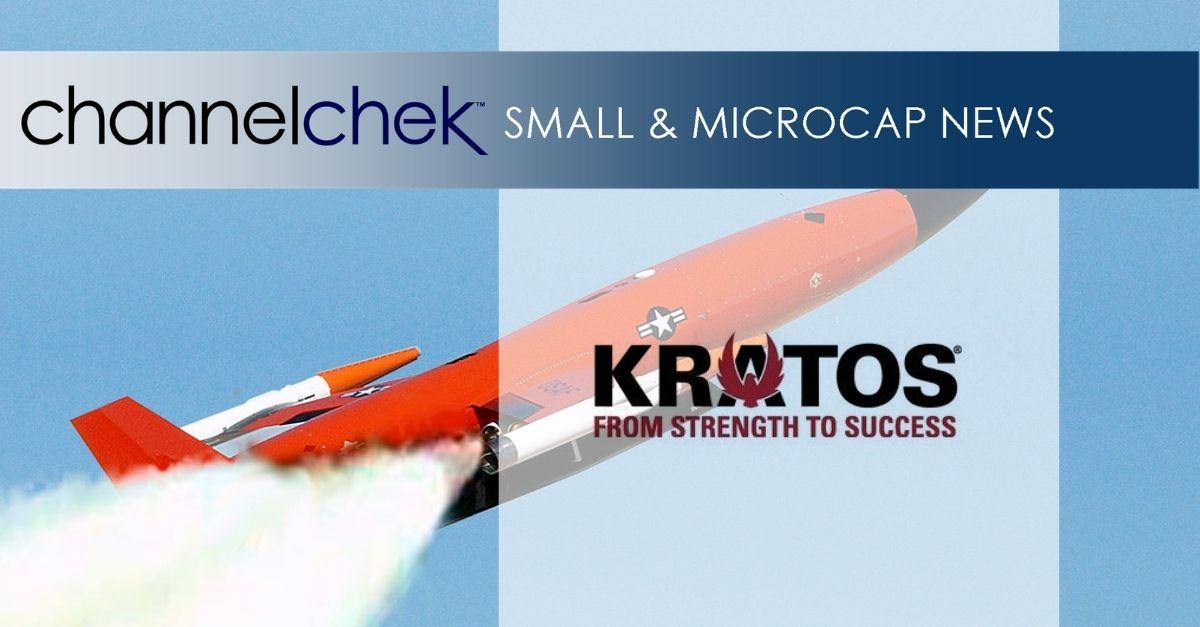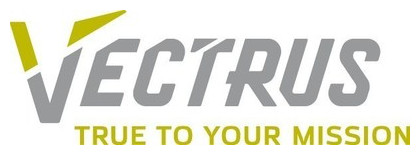
Vectrus Announces Strong Second Quarter Results; Increases Revenue and Adjusted Diluted EPS Guidance
Company Release – 8/10/2021
– Q2 revenue +40% Y/Y to $471 million; Organic revenue(1) +21% Y/Y
– Operating margin of 4.8%; Adjusted EBITDA margin(1) of 5.6%
– Q2 fully diluted EPS of $1.35; Adjusted diluted EPS(1) of $1.52
– Increasing 2021 revenue and adjusted diluted EPS(1) guidance
– Pacific region activities driving incremental revenue growth under LOGCAP V
– Successfully phased-in new task orders to provide sustainment services in the Middle East
COLORADO SPRINGS, Colo., Aug. 10, 2021 /PRNewswire/ — Vectrus, Inc. (NYSE: VEC) announced strong second quarter 2021 financial results.
“Our second quarter results are demonstrative of Vectrus’ ability to provide mission critical and rapid response converged solutions across all time zones and operational environments,” said Chuck Prow, Chief Executive Officer of Vectrus.
“During the quarter, revenue grew 40% year-over-year, with organic revenue growth of 21%,” said Prow. “Our strong organic revenue growth in the quarter was driven partly by the successful performance and execution of a task order to support an important training initiative based in the Indo-Pacific region, as well as achieving full operational capability under our new LOGCAP V CENTCOM task order in Iraq.”
“Our adjusted EBITDA margin in the second quarter was strong, reaching 5.6%,” said Prow. “Our year-to-date adjusted EBITDA margin is 5.2%, which is driven in part by the continued focus on operationalizing our enterprise performance improvement initiatives and demonstrates Vectrus’ ability to expand margins over time.”
“LOGCAP V continues to gain momentum and during the quarter we successfully achieved full operational capability in Iraq,” said Prow. “This transition represents a significant milestone for Vectrus and our employees that worked around the clock in challenging environments to ensure client success. We look forward to serving as the Army’s preferred source for base operations support and sustainment services in Iraq over the next several years.”
Prow continued, “In terms of INDOPACOM, we are experiencing growth executing task orders to support mission requirements in the region. We expect growth to continue as we ramp up operations in Kwajalein and become fully operational by mid-2022.”
“We are also continuing to execute client campaigns by inserting innovative technology-based solutions into infrastructure and creating value through mission effectiveness and cost reduction,” said Prow. “In the second quarter, we were awarded a position on the U.S. Navy Supply Systems Command Worldwide Expeditionary Multiple Award IDIQ Contract2 (WEXMAC). WEXMAC provides worldwide expeditionary supplies and services to support humanitarian and disaster relief, military exercises, and contingencies in 22 geographic regions. This award builds on our position under the Naval Facilities Engineering Command Global Contingency Services Multiple Award IDIQ Contract II, which has been an instrumental part of our Navy campaign. Importantly, WEXMAC represents another avenue to access this important client and we see significant opportunity to leverage Vectrus’ geographic positioning to support future opportunities under this new contract.”
“Additionally, we continue to focus on advancing our presence with the Air Force and in the second quarter won two new firm-fixed-price task orders valued at $40 million to provide installation and other support services, which were awarded under the Air Force Contract Augmentation Program V, or AFCAP V, which is a $6.4 billion IDIQ contract vehicle that provides contingency planning, deploying, training, and equipping of forces; emergency and contingency construction; and logistics and commodities and services,” said Prow.
Second Quarter 2021 Results
Second quarter 2021 revenue of $470.8 million was up $134.8 million year-on-year or 40.1% as compared to the same period last year. Revenue grew by $64.4 million year-over-year as a result of the two acquisitions on December 31, 2020 and grew $70.4 million organically.
Operating income was $22.6 million or 4.8% margin. Adjusted operating income1 was $25.0 million or 5.3% margin.
Adjusted EBITDA1 was $26.6 million or 5.6% margin. “Margin improved 360 basis points year-over-year in the second quarter and 210 basis points year-to-date,” said Susan Lynch, Senior Vice President and Chief Financial Officer. “Our strong first half results were driven by the ongoing execution of our enterprise performance improvement initiatives, recent acquisitions, our team’s success converting certain cost-plus components of a contract to fixed price and continued focus on prudently managing our cost structure. We remain focused on transforming Vectrus into a higher margin business and our second quarter and year-to-date performance reflects our ability to expand margins over time.”
Fully diluted EPS for the second quarter of 2021 was $1.35 as compared to $0.09 cents in the same period last year. Adjusted diluted EPS1, which adds back amortization of acquired intangible assets, was $1.52 for the quarter, as compared to $0.31 cents in the prior year. The increase in diluted EPS was driven by the company’s improved operating performance and two recent acquisitions.
Lynch continued, “Our results year-to-date are representative of Vectrus’ ability to generate substantial growth and earnings power. The second quarter results demonstrate our organic ability and how our strategic acquisitions are transforming the company into a higher value, growth-oriented platform. Our thoughtful deployment of capital is adding value from both an operational and financial perspective and we believe our strong balance sheet positions Vectrus to pursue future opportunities that align with our strategy and increase shareholder value.”
Cash provided by operating activities through July 2, 2021 was $14.0 million. Operating cash flow decreased year on year primarily due to the CARES Act Benefit in Q2’20 of $13 million in addition to the working capital requirements associated with several new program phase-ins.
Net debt at July 2, 2021 was $105.2 million, up $100.4 million from July 3, 2020. Total debt at July 2, 2021 was $175.0 million, up $107.5 million from $67.5 million at July 3, 2020. Both net and total debt were up due to the acquisitions of Zenetex and HHB on December 31, 2020. Cash at quarter-end was $69.8 million. Total consolidated indebtedness to consolidated EBITDA1 (total leverage ratio) was 1.76x.
Total backlog as of July 2, 2021 was $4.9 billion and funded backlog was $1.3 billion. The trailing twelve-month book-to-bill was 1.2x as of July 2, 2021.
Increasing 2021 Revenue and EPS Guidance
Lynch continued, “In light of our strong year-to-date performance, we are increasing the revenue and diluted EPS guidance ranges.” Guidance for 2021 is as follows:
|
$ millions, except for EBITDA margins and per share amounts
|
2020
Actual
|
2021 Guidance
|
2021
Mid-Point
|
2021
Mid-Point
vs 2020
|
|
Revenue
|
$1,396
|
$1,745
|
to
|
$1,780
|
$1,762
|
26.2%
|
|
Operating Income Margin
|
3.1%
|
3.7%
|
to
|
3.9%
|
3.8%
|
70 bps
|
|
Adjusted EBITDA Margin1
|
4.0%
|
4.8%
|
to
|
5.0%
|
4.9%
|
90 bps
|
|
Earnings Per Share
|
$3.14
|
$3.87
|
to
|
$4.18
|
$4.02
|
28.0%
|
|
Adjusted Diluted Earnings Per Share1
|
$3.36
|
$4.76
|
to
|
$5.07
|
$4.92
|
46.4%
|
|
Net Cash Provided by Operating Activities
|
$64.1
|
$58.0
|
to
|
$65.0
|
$61.5
|
(4.1%)
|
Forward-looking statements are based upon current expectations and are subject to factors that could cause actual results to differ materially from those suggested here, including those factors set forth in the Safe Harbor Statement below.
Second Quarter 2021 Conference Call
Management will conduct a conference call with analysts and investors at 4:30 p.m. ET on Tuesday, August 10, 2021. U.S.-based participants may dial in to the conference call at 877-407-0792, while international participants may dial 201-689-8263. A live webcast of the conference call as well as an accompanying slide presentation will be available on the Vectrus Investor Relations website at http://investors.vectrus.com or https://www.webcaster4.com/Webcast/Page/1431/42374.
A replay of the conference call will be posted on the Vectrus website shortly after completion of the call and will be available for one year. A telephonic replay will also be available through August 24, 2021, at 844-512-2921 (domestic) or 412-317-6671 (international) with passcode 13721935.
Footnotes:
1 See “Key Performance Indicators and Non-GAAP Financial Measures” for reconciliation.
2 WEXMAC is currently under protest.
About Vectrus
For more than 70 years, Vectrus has provided critical mission support for our customers’ toughest operational challenges. As a high-performing organization with exceptional talent, deep domain knowledge, a history of long-term customer relationships, and groundbreaking technical expertise, we deliver innovative, mission-matched solutions for our military and government customers worldwide. Whether it’s base operations support, supply chain and logistics, IT mission support, engineering and digital integration, security, or maintenance, repair, and overhaul, our customers count on us for on-target solutions that increase efficiency, reduce costs, improve readiness, and strengthen national security. Vectrus is headquartered in Colorado Springs, Colo., and includes approximately 9,200 employees spanning 206 locations in 27 countries. In 2020, Vectrus generated sales of $1.4 billion. For more information, visit the company’s website at www.vectrus.com or connect with Vectrus on Facebook, Twitter, and LinkedIn.
Safe Harbor Statement
Safe Harbor Statement under the Private Securities Litigation Reform Act of 1995 (the “Act”): Certain material presented herein includes forward-looking statements intended to qualify for the safe harbor from liability established by the Act. These forward-looking statements include, but are not limited to, all of the statements and items listed in the table in “2021 Guidance” above and other assumptions contained therein for purposes of such guidance, other statements about our 2021 performance outlook, five-year growth plan, revenue, DSO, contract opportunities, the potential impact of COVID-19, and any discussion of future operating or financial performance.
Whenever used, words such as “may,” “are considering,” “will,” “likely,” “anticipate,” “estimate,” “expect,” “project,” “intend,” “plan,” “believe,” “target,” “could,” “potential,” “continue,” “goal” or similar terminology are forward-looking statements. These statements are based on the beliefs and assumptions of our management based on information currently available to management.
These forward-looking statements are not guarantees of future performance, conditions or results, and involve a number of known and unknown risks, uncertainties, assumptions and other important factors, many of which are outside our management’s control, that could cause actual results to differ materially from the results discussed in the forward-looking statements. For a discussion of some of the risks and important factors that could cause actual results to differ from such forward-looking statements, see the risks and other factors detailed from time to time our Annual Report on Form 10-K, Quarterly Reports on Form 10-Q, and other filings with the U.S. Securities and Exchange Commission.
We undertake no obligation to update any forward-looking statements, whether as a result of new information, future events or otherwise, except as required by law.
|
VECTRUS, INC.
|
|
CONDENSED CONSOLIDATED STATEMENTS OF INCOME (UNAUDITED)
|
|
|
|
Three Months Ended
|
|
Six Months Ended
|
|
|
July 2,
|
|
July 3,
|
|
July 2,
|
|
July 3,
|
|
(In thousands, except per share data)
|
|
2021
|
|
2020
|
|
2021
|
|
2020
|
|
Revenue
|
|
$
|
470,845
|
|
|
$
|
336,063
|
|
|
$
|
904,849
|
|
|
$
|
687,797
|
|
|
Cost of revenue
|
|
422,660
|
|
|
311,817
|
|
|
816,308
|
|
|
631,510
|
|
|
Selling, general, and administrative expenses
|
|
25,605
|
|
|
21,816
|
|
|
49,427
|
|
|
41,374
|
|
|
Operating income
|
|
22,580
|
|
|
2,430
|
|
|
39,114
|
|
|
14,913
|
|
|
Interest expense, net
|
|
(2,253)
|
|
|
(1,346)
|
|
|
(4,186)
|
|
|
(3,048)
|
|
|
Income from operations before income taxes
|
|
20,327
|
|
|
1,084
|
|
|
34,928
|
|
|
11,865
|
|
|
Income tax (benefit) expense
|
|
4,393
|
|
|
(27)
|
|
|
6,946
|
|
|
2,086
|
|
|
Net income
|
|
$
|
15,934
|
|
|
$
|
1,111
|
|
|
$
|
27,982
|
|
|
$
|
9,779
|
|
|
|
|
|
|
|
|
|
|
|
Earnings per share
|
|
|
|
|
|
|
|
|
|
Basic
|
|
$
|
1.36
|
|
|
$
|
0.10
|
|
|
$
|
2.40
|
|
|
$
|
0.84
|
|
|
Diluted
|
|
$
|
1.35
|
|
|
$
|
0.09
|
|
|
$
|
2.37
|
|
|
$
|
0.83
|
|
|
Weighted average common shares outstanding – basic
|
|
11,715
|
|
|
11,607
|
|
|
11,681
|
|
|
11,575
|
|
|
Weighted average common shares outstanding – diluted
|
|
11,828
|
|
|
11,745
|
|
|
11,823
|
|
|
11,742
|
|
|
VECTRUS, INC.
|
|
CONDENSED CONSOLIDATED BALANCE SHEETS (UNAUDITED)
|
|
|
|
July 2,
|
|
December 31,
|
|
(In thousands, except share information)
|
|
2021
|
|
2020
|
|
Assets
|
|
|
|
|
|
Current assets
|
|
|
|
|
|
Cash and cash equivalents
|
|
$
|
69,803
|
|
|
$
|
66,949
|
|
|
Restricted cash
|
|
—
|
|
|
1,778
|
|
|
Receivables
|
|
353,813
|
|
|
314,959
|
|
|
Other current assets
|
|
27,594
|
|
|
24,702
|
|
|
Total current assets
|
|
451,210
|
|
|
408,388
|
|
|
Property, plant, and equipment, net
|
|
22,612
|
|
|
22,573
|
|
|
Goodwill
|
|
317,608
|
|
|
339,702
|
|
|
Intangible assets, net
|
|
68,818
|
|
|
48,105
|
|
|
Right-of-use assets
|
|
26,997
|
|
|
18,718
|
|
|
Other non-current assets
|
|
8,902
|
|
|
6,325
|
|
|
Total non-current assets
|
|
444,937
|
|
|
435,423
|
|
|
Total Assets
|
|
$
|
896,147
|
|
|
$
|
843,811
|
|
|
Liabilities and Shareholders’ Equity
|
|
|
|
|
|
Current liabilities
|
|
|
|
|
|
Accounts payable
|
|
$
|
175,002
|
|
|
$
|
159,586
|
|
|
Compensation and other employee benefits
|
|
90,646
|
|
|
79,568
|
|
|
Short-term debt
|
|
9,800
|
|
|
8,600
|
|
|
Other accrued liabilities
|
|
41,223
|
|
|
40,657
|
|
|
Total current liabilities
|
|
316,671
|
|
|
288,411
|
|
|
Long-term debt, net
|
|
163,997
|
|
|
168,751
|
|
|
Deferred tax liability
|
|
39,709
|
|
|
39,386
|
|
|
Other non-current liabilities
|
|
42,946
|
|
|
42,325
|
|
|
Total non-current liabilities
|
|
246,652
|
|
|
250,462
|
|
|
Total liabilities
|
|
563,323
|
|
|
538,873
|
|
|
Commitments and contingencies (Note 10)
|
|
|
|
|
|
Shareholders’ Equity
|
|
|
|
|
|
Preferred stock; $0.01 par value; 10,000,000 shares authorized; No shares issued and outstanding
|
|
—
|
|
|
—
|
|
|
Common stock; $0.01 par value; 100,000,000 shares authorized; 11,724,430 and 11,624,717 shares
issued and outstanding as of July 2, 2021 and December 31, 2020, respectively
|
|
117
|
|
|
116
|
|
|
Additional paid in capital
|
|
84,650
|
|
|
82,823
|
|
|
Retained earnings
|
|
250,008
|
|
|
222,026
|
|
|
Accumulated other comprehensive loss
|
|
(1,951)
|
|
|
(27)
|
|
|
Total shareholders’ equity
|
|
332,824
|
|
|
304,938
|
|
|
Total Liabilities and Shareholders’ Equity
|
|
$
|
896,147
|
|
|
$
|
843,811
|
|
|
VECTRUS, INC.
|
|
CONDENSED CONSOLIDATED STATEMENTS OF CASH FLOWS (UNAUDITED)
|
|
|
|
Six Months Ended
|
|
|
July 2,
|
|
July 3,
|
|
(In thousands)
|
|
2021
|
|
2020
|
|
Operating activities
|
|
|
|
|
|
Net income
|
|
$
|
27,982
|
|
|
$
|
9,779
|
|
|
Adjustments to reconcile net income to net cash (used in) provided by operating activities:
|
|
Depreciation expense
|
|
3,097
|
|
|
1,971
|
|
|
Amortization of intangible assets
|
|
4,891
|
|
|
2,028
|
|
|
Loss on disposal of property, plant, and equipment
|
|
60
|
|
|
—
|
|
|
Stock-based compensation
|
|
4,923
|
|
|
5,411
|
|
|
Amortization of debt issuance costs
|
|
463
|
|
|
193
|
|
|
Changes in assets and liabilities:
|
|
|
|
|
|
Receivables
|
|
(38,882)
|
|
|
9,429
|
|
|
Other assets
|
|
(4,063)
|
|
|
(7,938)
|
|
|
Accounts payable
|
|
18,784
|
|
|
(6,021)
|
|
|
Deferred taxes
|
|
370
|
|
|
(2,735)
|
|
|
Compensation and other employee benefits
|
|
11,285
|
|
|
7,037
|
|
|
Other liabilities
|
|
(14,884)
|
|
|
15,252
|
|
|
Net cash provided by operating activities
|
|
14,026
|
|
|
34,406
|
|
|
Investing activities
|
|
|
|
|
|
Purchases of capital assets and intangibles
|
|
(4,833)
|
|
|
(2,246)
|
|
|
Proceeds from the disposition of assets
|
|
16
|
|
|
—
|
|
|
Business acquisition purchase price adjustment
|
|
262
|
|
|
—
|
|
|
Contribution to join venture
|
|
(1,846)
|
|
|
—
|
|
|
Net cash used in investing activities
|
|
(6,401)
|
|
|
(2,246)
|
|
|
Financing activities
|
|
|
|
|
|
Repayments of long-term debt
|
|
(4,000)
|
|
|
(3,000)
|
|
|
Proceeds from revolver
|
|
215,000
|
|
|
144,000
|
|
|
Repayments of revolver
|
|
(215,000)
|
|
|
(144,000)
|
|
|
Proceeds from exercise of stock options
|
|
113
|
|
|
59
|
|
|
Payments of debt issuance costs
|
|
(17)
|
|
|
—
|
|
|
Payments of employee withholding taxes on share-based compensation
|
|
(2,272)
|
|
|
(1,873)
|
|
|
Net cash used in financing activities
|
|
(6,176)
|
|
|
(4,814)
|
|
|
Exchange rate effect on cash
|
|
(373)
|
|
|
55
|
|
|
Net change in cash, cash equivalents and restricted cash
|
|
1,076
|
|
|
27,401
|
|
|
Cash, cash equivalents and restricted cash-beginning of year
|
|
68,727
|
|
|
35,318
|
|
|
Cash, cash equivalents and restricted cash-end of period
|
|
$
|
69,803
|
|
|
$
|
62,719
|
|
|
|
|
|
|
|
Supplemental disclosure of cash flow information:
|
|
|
|
|
|
Interest paid
|
|
$
|
3,111
|
|
|
$
|
2,527
|
|
|
Income taxes paid
|
|
$
|
5,747
|
|
|
$
|
70
|
|
|
Purchase of capital assets on account
|
|
$
|
618
|
|
|
$
|
447
|
|
Key Performance Indicators and Non-GAAP Measures
The primary financial performance measures we use to manage our business and monitor results of operations are revenue trends and operating income trends. Management believes that these financial performance measures are the primary drivers for our earnings and net cash from operating activities. Management evaluates its contracts and business performance by focusing on revenue, operating income, and operating margin. Operating income represents revenue less both cost of revenue and selling, general and administrative (SG&A) expenses. Cost of revenue consists of labor, subcontracting costs, materials, and an allocation of indirect costs, which includes service center transaction costs. SG&A expenses consist of indirect labor costs (including wages and salaries for executives and administrative personnel), bid and proposal expenses and other general and administrative expenses not allocated to cost of revenue. We define operating margin as operating income divided by revenue.
We manage the nature and amount of costs at the program level, which forms the basis for estimating our total costs and profitability. This is consistent with our approach for managing our business, which begins with management’s assessing the bidding opportunity for each contract and then managing contract profitability throughout the performance period.
In addition to the key performance measures discussed above, we consider adjusted operating income, adjusted operating margin, adjusted net income, adjusted diluted earnings per share, EBITDA, adjusted EBITDA, EBITDA margin, adjusted EBITDA margin, and organic revenue to be useful to management and investors in evaluating our operating performance, and to provide a tool for evaluating our ongoing operations. This information can assist investors in assessing our financial performance and measures our ability to generate capital for deployment among competing strategic alternatives and initiatives. We provide this information to our investors in our earnings releases, presentations, and other disclosures.
Adjusted operating income, adjusted operating margin, adjusted net income, adjusted diluted earnings per share, EBITDA, adjusted EBITDA, EBITDA margin, adjusted EBITDA margin, and organic revenue, however, are not measures of financial performance under GAAP and should not be considered a substitute for operating income, operating margin, net income and diluted earnings per share as determined in accordance with GAAP. Definitions and reconciliations of these items are provided below.
- Adjusted operating income is defined as operating income, adjusted to exclude items that may include, but are not limited to significant charges or credits, and unusual and infrequent non-operating items, such as M&A transaction and LOGCAP V pre-operational legal costs, and amortization of acquired intangible assets that impact current results but are not related to our ongoing operations.
- Adjusted operating margin is defined as adjusted operating income divided by revenue.
- Adjusted net income is defined as net income, adjusted to exclude items that may include, but are not limited to, significant charges or credits, and unusual and infrequent non-operating items, such as M&A transaction and LOGCAP V pre-operational legal costs, and amortization of acquired intangible assets that impact current results but are not related to our ongoing operations.
- Adjusted diluted earnings per share is defined as adjusted net income divided by the weighted average diluted common shares outstanding.
- EBITDA is defined as operating income, adjusted to exclude depreciation and amortization.
- Adjusted EBITDA is defined as EBITDA, adjusted to exclude items that may include, but are not limited to, significant charges or credits and unusual and infrequent non-operating items, such as M&A transaction and LOGCAP V pre-operational legal costs that impact current results but are not related to our ongoing operations.
- EBITDA margin is defined as EBITDA divided by revenue.
- Adjusted EBITDA margin is defined as Adjusted EBITDA divided by revenue.
- Organic revenue is defined as revenue, adjusted to exclude revenue from acquired companies.
|
Adjusted Net Income, Adjusted Diluted Earnings Per Share (Non-GAAP Measures)
|
|
|
|
|
|
|
|
|
|
|
|
($ in thousands, except per share data)
|
|
Three Months Ended July 2, 2021 As Reported
|
|
M&A Related Costs
|
|
LOGCAP V Pre-Operational Legal Costs
|
|
Amortization of acquired intangible assets
|
|
Three Months Ended July 2, 2021 As Reported – Adjusted
|
|
|
|
|
|
|
|
|
|
|
|
|
Revenue
|
|
$
|
470,845
|
|
|
$
|
—
|
|
|
$
|
—
|
|
|
$
|
—
|
|
|
$
|
470,845
|
|
|
Growth
|
|
40.1
|
%
|
|
|
|
|
|
|
|
40.1
|
%
|
|
Operating income
|
|
$
|
22,580
|
|
|
$
|
—
|
|
|
$
|
21
|
|
|
$
|
2,436
|
|
|
$
|
25,037
|
|
|
Operating margin
|
|
4.8
|
%
|
|
|
|
|
|
|
|
5.3
|
%
|
|
|
|
|
|
|
|
|
|
|
|
|
Interest expense, net
|
|
$
|
(2,253)
|
|
|
$
|
—
|
|
|
$
|
—
|
|
|
$
|
—
|
|
|
$
|
(2,253)
|
|
|
|
|
|
|
|
|
|
|
|
|
|
Income from operations before income taxes
|
|
$
|
20,327
|
|
|
$
|
—
|
|
|
$
|
21
|
|
|
$
|
2,436
|
|
|
$
|
22,784
|
|
|
|
|
|
|
|
|
|
|
|
|
|
Income tax expense
|
|
$
|
4,393
|
|
|
$
|
—
|
|
|
$
|
4
|
|
|
$
|
463
|
|
|
$
|
4,860
|
|
|
Income tax rate
|
|
21.6
|
%
|
|
|
|
|
|
|
|
21.3
|
%
|
|
|
|
|
|
|
|
|
|
|
|
|
Net income
|
|
$
|
15,934
|
|
|
$
|
—
|
|
|
$
|
17
|
|
|
$
|
1,973
|
|
|
$
|
17,924
|
|
|
|
|
|
|
|
|
|
|
|
|
|
Weighted average common shares outstanding, diluted
|
|
11,828
|
|
|
|
|
|
|
|
|
11,828
|
|
|
|
|
|
|
|
|
|
|
|
|
|
Diluted earnings per share
|
|
$
|
1.35
|
|
|
$
|
—
|
|
|
$
|
—
|
|
|
$
|
0.17
|
|
|
$
|
1.52
|
|
|
|
|
|
|
|
|
|
|
|
|
|
EBITDA (Non-GAAP Measures)
|
|
|
|
|
|
|
|
|
|
|
|
($ in thousands)
|
|
Three Months Ended July 2, 2021 As Reported
|
|
M&A Related Costs
|
|
LOGCAP V Pre-Operational Legal Costs
|
|
Amortization of acquired intangible assets
|
|
Three Months Ended July 2, 2021 As Reported – Adjusted
|
|
Operating Income
|
|
$
|
22,580
|
|
|
$
|
—
|
|
|
$
|
21
|
|
|
$
|
2,436
|
|
|
$
|
25,037
|
|
|
|
|
|
|
|
|
|
|
|
|
|
Add:
|
|
|
|
|
|
|
|
|
|
|
|
Depreciation and amortization
|
|
$
|
3,991
|
|
|
$
|
—
|
|
|
$
|
—
|
|
|
$
|
(2,436)
|
|
|
$
|
1,555
|
|
|
|
|
|
|
|
|
|
|
|
|
|
EBITDA
|
|
$
|
26,571
|
|
|
$
|
—
|
|
|
$
|
21
|
|
|
$
|
—
|
|
|
$
|
26,592
|
|
|
EBITDA Margin
|
|
5.6
|
%
|
|
|
|
|
|
|
|
5.6
|
%
|
|
|
Adjusted Net Income, Adjusted Diluted Earnings Per Share (Non-GAAP Measures)
|
|
|
|
|
|
|
|
|
|
|
|
($ in thousands, except per share data)
|
|
Three Months Ended July 3, 2020 As Reported
|
|
M&A Related Costs
|
|
LOGCAP V Pre-Operational Legal Costs
|
|
Amortization of acquired intangible assets
|
|
Three Months Ended July 3, 2020 As Reported – Adjusted
|
|
|
|
|
|
|
|
|
|
|
|
|
Revenue
|
|
$
|
336,063
|
|
|
$
|
—
|
|
|
$
|
—
|
|
|
$
|
—
|
|
|
$
|
336,063
|
|
|
|
|
|
|
|
|
|
|
|
|
|
Operating income
|
|
$
|
2,430
|
|
|
$
|
2,193
|
|
|
$
|
46
|
|
|
$
|
1,013
|
|
|
$
|
5,682
|
|
|
Operating margin
|
|
0.7
|
%
|
|
|
|
|
|
|
|
1.7
|
%
|
|
|
|
|
|
|
|
|
|
|
|
|
Interest expense, net
|
|
$
|
(1,346)
|
|
|
$
|
—
|
|
|
$
|
—
|
|
|
$
|
—
|
|
|
$
|
(1,346)
|
|
|
|
|
|
|
|
|
|
|
|
|
|
Income from operations before income taxes
|
|
$
|
1,084
|
|
|
$
|
2,193
|
|
|
$
|
46
|
|
|
$
|
1,013
|
|
|
$
|
4,336
|
|
|
|
|
|
|
|
|
|
|
|
|
|
Income tax expense
|
|
$
|
(27)
|
|
|
$
|
504
|
|
|
$
|
11
|
|
|
$
|
171
|
|
|
$
|
659
|
|
|
Income tax rate
|
|
(2.5)
|
%
|
|
|
|
|
|
|
|
15.2
|
%
|
|
|
|
|
|
|
|
|
|
|
|
|
Net income
|
|
$
|
1,111
|
|
|
$
|
1,689
|
|
|
$
|
35
|
|
|
$
|
842
|
|
|
$
|
3,677
|
|
|
|
|
|
|
|
|
|
|
|
|
|
Weighted average common shares outstanding, diluted
|
|
11,745
|
|
|
|
|
|
|
|
|
11,745
|
|
|
|
|
|
|
|
|
|
|
|
|
|
Diluted earnings per share
|
|
$
|
0.09
|
|
|
$
|
0.14
|
|
|
$
|
—
|
|
|
$
|
0.07
|
|
|
$
|
0.31
|
|
|
|
|
|
|
|
|
|
|
|
|
|
EBITDA (Non-GAAP Measures)
|
|
|
|
|
|
|
|
|
|
|
|
($ in thousands)
|
|
Three Months Ended July 3, 2020 As Reported
|
|
M&A Related Costs
|
|
LOGCAP V Pre-Operational Legal Costs
|
|
Amortization of acquired intangible assets
|
|
Three Months Ended July 3, 2020 As Reported – Adjusted
|
|
Operating Income
|
|
$
|
2,430
|
|
|
$
|
2,193
|
|
|
$
|
46
|
|
|
$
|
1,013
|
|
|
$
|
5,682
|
|
|
|
|
|
|
|
|
|
|
|
|
|
Add:
|
|
|
|
|
|
|
|
|
|
|
|
Depreciation and amortization
|
|
$
|
1,988
|
|
|
$
|
—
|
|
|
$
|
—
|
|
|
$
|
(1,013)
|
|
|
$
|
975
|
|
|
|
|
|
|
|
|
|
|
|
|
|
EBITDA
|
|
$
|
4,418
|
|
|
$
|
2,193
|
|
|
$
|
46
|
|
|
$
|
—
|
|
|
$
|
6,657
|
|
|
EBITDA Margin
|
|
1.3
|
%
|
|
|
|
|
|
|
|
2.0
|
%
|
|
|
|
|
|
|
|
|
|
|
|
|
|
Adjusted Net Income, Adjusted Diluted Earnings Per Share (Non-GAAP Measures)
|
|
|
|
|
|
|
|
|
|
|
|
($ in thousands, except per share data)
|
|
Six Months Ended July 2, 2021 As Reported
|
|
M&A Related Costs
|
|
LOGCAP V Pre-Operational Legal Costs
|
|
Amortization of acquired intangible assets
|
|
Six Months Ended July 2, 2021 As Reported – Adjusted
|
|
|
|
|
|
|
|
|
|
|
|
|
Revenue
|
|
$
|
904,849
|
|
|
$
|
—
|
|
|
$
|
—
|
|
|
$
|
—
|
|
|
$
|
904,849
|
|
|
Growth
|
|
|
31.6%
|
|
|
|
|
|
|
|
|
|
|
|
|
|
|
|
31.6%
|
|
|
Growth
|
|
|
%
|
|
|
|
|
|
|
|
1
|
%
|
|
Operating income
|
|
$
|
39,114
|
|
|
$
|
—
|
|
|
$
|
178
|
|
|
$
|
4,891
|
|
|
$
|
44,183
|
|
|
Operating margin
|
|
4.3
|
%
|
|
|
|
|
|
|
|
4.9
|
%
|
|
|
|
|
|
|
|
|
|
|
|
|
Interest expense, net
|
|
$
|
(4,186)
|
|
|
$
|
—
|
|
|
$
|
—
|
|
|
$
|
—
|
|
|
$
|
(4,186)
|
|
|
|
|
|
|
|
|
|
|
|
|
|
Income from operations before income taxes
|
|
$
|
34,928
|
|
|
$
|
—
|
|
|
$
|
178
|
|
|
$
|
4,891
|
|
|
$
|
39,997
|
|
|
|
|
|
|
|
|
|
|
|
|
|
Income tax expense
|
|
$
|
6,946
|
|
|
$
|
—
|
|
|
$
|
34
|
|
|
$
|
929
|
|
|
$
|
7,909
|
|
|
Income tax rate
|
|
19.9
|
%
|
|
|
|
|
|
|
|
19.8
|
%
|
|
|
|
|
|
|
|
|
|
|
|
|
Net income
|
|
$
|
27,982
|
|
|
$
|
—
|
|
|
$
|
144
|
|
|
$
|
3,962
|
|
|
$
|
32,088
|
|
|
|
|
|
|
|
|
|
|
|
|
|
Weighted average common shares outstanding, diluted
|
|
11,823
|
|
|
|
|
|
|
|
|
11,823
|
|
|
|
|
|
|
|
|
|
|
|
|
|
Diluted earnings per share
|
|
$
|
2.37
|
|
|
$
|
—
|
|
|
$
|
0.01
|
|
|
$
|
0.33
|
|
|
$
|
2.71
|
|
|
|
|
|
|
|
|
|
|
|
|
|
EBITDA (Non-GAAP Measures)
|
|
|
|
|
|
|
|
|
|
|
|
($ in thousands)
|
|
Six Months Ended July 2, 2021 As Reported
|
|
M&A Related Costs
|
|
LOGCAP V Pre-Operational Legal Costs
|
|
Amortization of acquired intangible assets
|
|
Six Months Ended July 2, 2021 As Reported – Adjusted
|
|
Operating Income
|
|
$
|
39,114
|
|
|
$
|
—
|
|
|
$
|
178
|
|
|
$
|
4,891
|
|
|
$
|
44,183
|
|
|
|
|
|
|
|
|
|
|
|
|
|
Add:
|
|
|
|
|
|
|
|
|
|
|
|
Depreciation and amortization
|
|
$
|
7,989
|
|
|
$
|
—
|
|
|
$
|
—
|
|
|
$
|
(4,891)
|
|
|
$
|
3,097
|
|
|
|
|
|
|
|
|
|
|
|
|
|
EBITDA
|
|
$
|
47,103
|
|
|
$
|
—
|
|
|
$
|
178
|
|
|
$
|
—
|
|
|
$
|
47,280
|
|
|
EBITDA Margin
|
|
5.2
|
%
|
|
|
|
|
|
|
|
5.2
|
%
|
|
|
|
|
|
|
|
|
|
|
|
|
|
|
|
|
|
|
|
|
|
|
|
|
|
Adjusted Net Income, Adjusted Diluted Earnings Per Share (Non-GAAP Measures)
|
|
|
|
|
|
|
|
|
|
|
|
($ in thousands, except per share data)
|
|
Six Months Ended July 3, 2020 As Reported
|
|
M&A Related Costs
|
|
LOGCAP V Pre-Operational Legal Costs
|
|
Amortization of acquired intangible assets
|
|
Six Months Ended July 3, 2020 As Reported – Adjusted
|
|
|
|
|
|
|
|
|
|
|
|
|
Revenue
|
|
$
|
687,797
|
|
|
$
|
—
|
|
|
$
|
—
|
|
|
$
|
—
|
|
|
$
|
687,797
|
|
|
|
|
|
|
|
|
|
|
|
|
|
Operating income
|
|
$
|
14,913
|
|
|
$
|
2,193
|
|
|
$
|
187
|
|
|
$
|
2,028
|
|
|
$
|
19,321
|
|
|
Operating margin
|
|
2.2
|
%
|
|
|
|
|
|
|
|
2.8
|
%
|
|
|
|
|
|
|
|
|
|
|
|
|
Interest expense, net
|
|
$
|
(3,048)
|
|
|
$
|
—
|
|
|
$
|
—
|
|
|
$
|
—
|
|
|
$
|
(3,048)
|
|
|
|
|
|
|
|
|
|
|
|
|
|
Income from operations before income taxes
|
|
$
|
11,865
|
|
|
$
|
2,193
|
|
|
$
|
187
|
|
|
$
|
2,028
|
|
|
$
|
16,273
|
|
|
|
|
|
|
|
|
|
|
|
|
|
Income tax expense
|
|
$
|
2,086
|
|
|
$
|
504
|
|
|
$
|
39
|
|
|
$
|
342
|
|
|
$
|
2,971
|
|
|
Income tax rate
|
|
17.6
|
%
|
|
|
|
|
|
|
|
18.3
|
%
|
|
|
|
|
|
|
|
|
|
|
|
|
Net income
|
|
$
|
9,779
|
|
|
$
|
1,689
|
|
|
$
|
148
|
|
|
$
|
1,686
|
|
|
$
|
13,302
|
|
|
|
|
|
|
|
|
|
|
|
|
|
Weighted average common shares outstanding, diluted
|
|
11,742
|
|
|
|
|
|
|
|
|
11,742
|
|
|
|
|
|
|
|
|
|
|
|
|
|
Diluted earnings per share
|
|
$
|
0.83
|
|
|
$
|
0.14
|
|
|
$
|
0.01
|
|
|
$
|
0.14
|
|
|
$
|
1.13
|
|
|
|
|
|
|
|
|
|
|
|
|
|
EBITDA (Non-GAAP Measures)
|
|
|
|
|
|
|
|
|
|
|
|
($ in thousands)
|
|
Six Months Ended July 3, 2020 As Reported
|
|
M&A Related Costs
|
|
LOGCAP V Pre-Operational Legal Costs
|
|
Amortization of acquired intangible assets
|
|
Six Months Ended July 3, 2020 As Reported – Adjusted
|
|
Operating Income
|
|
$
|
14,913
|
|
|
$
|
2,193
|
|
|
$
|
187
|
|
|
$
|
2,028
|
|
|
$
|
19,321
|
|
|
|
|
|
|
|
|
|
|
|
|
|
Add:
|
|
|
|
|
|
|
|
|
|
|
|
Depreciation and amortization
|
|
$
|
3,999
|
|
|
$
|
—
|
|
|
$
|
—
|
|
|
$
|
(2,028)
|
|
|
$
|
1,971
|
|
|
|
|
|
|
|
|
|
|
|
|
|
EBITDA
|
|
$
|
18,912
|
|
|
$
|
2,193
|
|
|
$
|
187
|
|
|
$
|
—
|
|
|
$
|
21,292
|
|
|
EBITDA Margin
|
|
2.7
|
%
|
|
|
|
|
|
|
|
3.1
|
%
|
|
|
|
|
|
|
|
|
|
|
|
|
($ In thousands)
|
|
Three Months Ended July 2, 2021 As Reported
|
|
Three Months Ended July 2, 2021 Zenetex & HHB
|
|
Three Months Ended July 2, 2021 As Reported – Organic
|
|
|
|
|
|
|
|
|
Revenue
|
|
$
|
470,845
|
|
|
|
$
|
64,397
|
|
|
$
|
406,448
|
|
|
|
|
|
|
|
|
|
($ In thousands)
|
|
Three Months Ended July 3, 2020 As Reported
|
|
Three Months Ended July 3, 2020 Zenetex & HHB
|
|
Three Months Ended July 3, 2020 As Reported – Organic
|
|
|
|
|
|
|
|
|
Revenue
|
|
$
|
336,063
|
|
|
|
$
|
—
|
|
|
$
|
336,063
|
|
|
|
|
|
|
|
|
|
Organic Revenue $
|
|
|
|
|
|
$
|
70,385
|
|
|
Organic Revenue %
|
|
|
|
|
|
20.9
|
%
|
|
|
|
|
|
|
|
|
|
|
|
|
|
|
|
($ In thousands)
|
|
Six Months Ended July 2, 2021 As Reported
|
|
Six Months Ended July 2, 2021 Zenetex & HHB
|
|
Six Months Ended July 2, 2021 As Reported – Organic
|
|
|
|
|
|
|
|
|
Revenue
|
|
$
|
904,849
|
|
|
|
$
|
133,266
|
|
|
$
|
771,583
|
|
|
|
|
|
|
|
|
|
($ In thousands)
|
|
Six Months Ended July 3, 2020 As Reported
|
|
Six Months Ended July 3, 2020 Zenetex & HHB
|
|
Six Months Ended July 3, 2020 As Reported – Organic
|
|
|
|
|
|
|
|
|
Revenue
|
|
$
|
687,797
|
|
|
|
$
|
—
|
|
|
$
|
687,797
|
|
|
|
|
|
|
|
|
|
Organic Revenue $
|
|
|
|
|
|
$
|
83,786
|
|
|
Organic Revenue %
|
|
|
|
|
|
12.2
|
%
|
|
|
|
|
|
|
|
|
|
|
|
|
|
|
SUPPLEMENTAL INFORMATION
Revenue by client branch, contract type, contract relationship, and geographic region for the periods presented below was as follows:
|
Revenue by Client
|
|
|
|
|
|
|
|
|
|
|
|
|
|
|
|
|
|
|
Three Months Ended
|
|
Six Months Ended
|
|
|
July 2,
|
|
|
|
July 3,
|
|
|
|
July 2,
|
|
|
|
July 3,
|
|
|
|
(In thousands)
|
|
2021
|
|
%
|
|
2020
|
|
%
|
|
2021
|
|
%
|
|
2020
|
|
%
|
|
Army
|
|
$
|
310,638
|
|
|
66
|
%
|
|
$
|
227,351
|
|
|
68
|
%
|
|
$
|
567,987
|
|
|
63
|
%
|
|
$
|
474,906
|
|
|
69
|
%
|
|
Air Force
|
|
63,206
|
|
|
13
|
%
|
|
78,321
|
|
|
23
|
%
|
|
141,375
|
|
|
16
|
%
|
|
151,663
|
|
|
22
|
%
|
|
Navy
|
|
56,399
|
|
|
12
|
%
|
|
14,542
|
|
|
4
|
%
|
|
112,827
|
|
|
12
|
%
|
|
29,779
|
|
|
4
|
%
|
|
Other
|
|
40,602
|
|
|
9
|
%
|
|
15,849
|
|
|
5
|
%
|
|
82,660
|
|
|
9
|
%
|
|
31,449
|
|
|
5
|
%
|
|
Total Revenue
|
|
$
|
470,845
|
|
|
|
|
$
|
336,063
|
|
|
|
|
$
|
904,849
|
|
|
|
|
$
|
687,797
|
|
|
|
|
|
|
|
|
|
|
|
|
|
|
|
|
|
|
|
|
|
Revenue by Contract Type
|
|
|
|
|
|
|
|
|
|
|
|
|
|
|
|
|
|
|
Three Months Ended
|
|
Six Months Ended
|
|
|
July 2,
|
|
|
|
July 3,
|
|
|
|
July 2,
|
|
|
|
July 3,
|
|
|
|
(In thousands)
|
|
2021
|
|
%
|
|
2020
|
|
%
|
|
2021
|
|
%
|
|
2020
|
|
%
|
|
Cost-plus and cost-reimbursable ¹
|
|
$
|
359,429
|
|
|
76
|
%
|
|
$
|
242,740
|
|
|
72
|
%
|
|
$
|
664,676
|
|
|
73
|
%
|
|
$
|
499,059
|
|
|
73
|
%
|
|
Firm-fixed-price
|
|
111,416
|
|
|
24
|
%
|
|
93,323
|
|
|
28
|
%
|
|
240,173
|
|
|
27
|
%
|
|
188,738
|
|
|
27
|
%
|
|
Total Revenue
|
|
$
|
470,845
|
|
|
|
|
$
|
336,063
|
|
|
|
|
$
|
904,849
|
|
|
|
|
$
|
687,797
|
|
|
|
|
|
|
|
|
|
|
|
|
|
|
|
|
|
|
|
|
|
¹ Includes time and material contracts
|
|
|
|
|
|
|
|
|
|
|
|
|
|
|
|
|
|
|
|
|
|
|
|
|
|
|
|
|
|
|
|
|
Revenue by Contract Relationship
|
|
|
|
|
|
|
|
|
|
|
|
|
|
|
|
|
|
|
Three Months Ended
|
|
Six Months Ended
|
|
|
July 2,
|
|
|
|
July 3,
|
|
|
|
July 2,
|
|
|
|
July 3,
|
|
|
|
(In thousands)
|
|
2021
|
|
%
|
|
2020
|
|
%
|
|
2021
|
|
%
|
|
2020
|
|
%
|
|
Prime contractor
|
|
$
|
440,040
|
|
|
93
|
%
|
|
$
|
314,345
|
|
|
94
|
%
|
|
$
|
843,303
|
|
|
93
|
%
|
|
$
|
647,738
|
|
|
94
|
%
|
|
Subcontractor
|
|
30,805
|
|
|
7
|
%
|
|
21,718
|
|
|
6
|
%
|
|
61,546
|
|
|
7
|
%
|
|
40,059
|
|
|
6
|
%
|
|
Total Revenue
|
|
$
|
470,845
|
|
|
|
|
$
|
336,063
|
|
|
|
|
$
|
904,849
|
|
|
|
|
$
|
687,797
|
|
|
|
|
|
|
|
|
|
|
|
|
|
|
|
|
|
|
|
|
|
Revenue by Geographic Region
|
|
|
|
|
|
|
|
|
|
|
|
|
|
|
|
|
|
|
Three Months Ended
|
|
Six Months Ended
|
|
|
July 2,
|
|
|
|
July 3,
|
|
|
|
July 2,
|
|
|
|
July 3,
|
|
|
|
(In thousands)
|
|
2021
|
|
%
|
|
2020
|
|
%
|
|
2021
|
|
%
|
|
2020
|
|
%
|
|
Middle East
|
|
$
|
258,488
|
|
|
55
|
%
|
|
$
|
215,968
|
|
|
64
|
%
|
|
$
|
498,500
|
|
|
55
|
%
|
|
$
|
453,905
|
|
|
66
|
%
|
|
United States
|
|
146,549
|
|
|
31
|
%
|
|
82,670
|
|
|
25
|
%
|
|
296,362
|
|
|
33
|
%
|
|
162,921
|
|
|
24
|
%
|
|
Europe
|
|
36,084
|
|
|
8
|
%
|
|
35,533
|
|
|
11
|
%
|
|
76,706
|
|
|
8
|
%
|
|
68,063
|
|
|
10
|
%
|
|
Asia
|
|
29,724
|
|
|
6
|
%
|
|
1,892
|
|
|
1
|
%
|
|
33,281
|
|
|
4
|
%
|
|
2,908
|
|
|
0
|
%
|
|
Total Revenue
|
|
$
|
470,845
|
|
|
|
|
$
|
336,063
|
|
|
|
|
$
|
904,849
|
|
|
|
|
$
|
687,797
|
|
|
|
CONTACT:
Vectrus
Mike Smith, CFA
719-637-5773
mike.smith@vectrus.com
SOURCE Vectrus, Inc.

